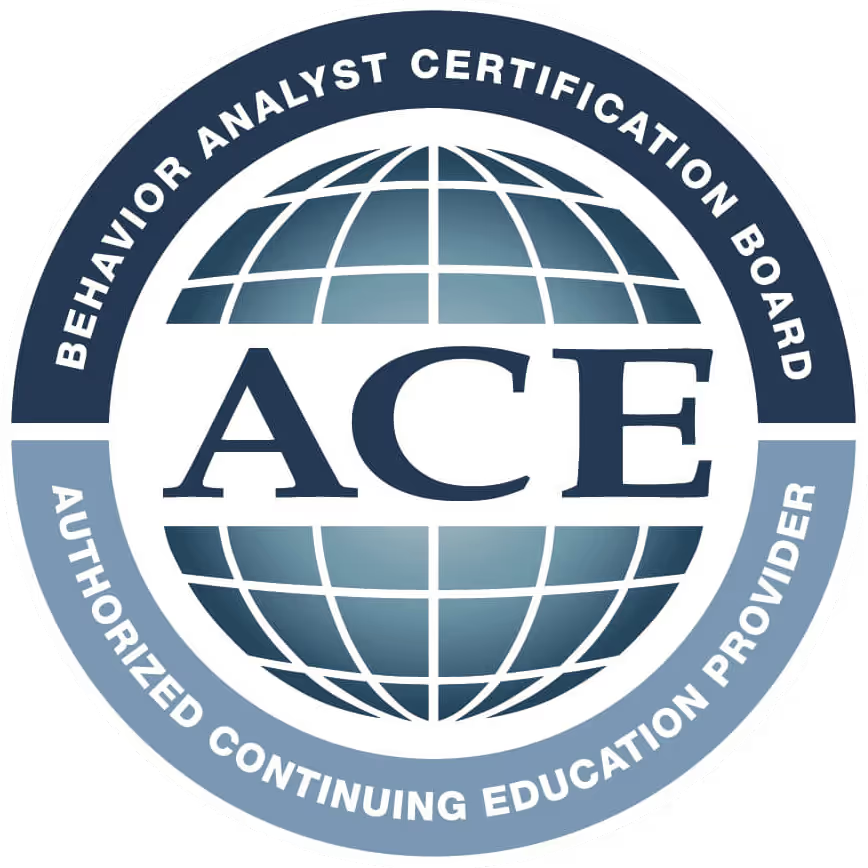
The Role of Occupational Therapy in Helping Children with Visual Impairments
Empowering Lives Through Therapeutic Strategies
Understanding Occupational Therapy for Children with Visual Impairments
Occupational therapy plays a pivotal role in supporting the development and daily functioning of children with visual impairments. This specialized field focuses on helping these children navigate their world more independently, utilizing their remaining senses to enhance their quality of life. In this exploration, we delve into the intricacies of occupational therapy for children with visual impairments, uncovering therapeutic strategies, the impact on development, legal considerations, and the essence of sensory integration.
Key Components of Occupational Therapy
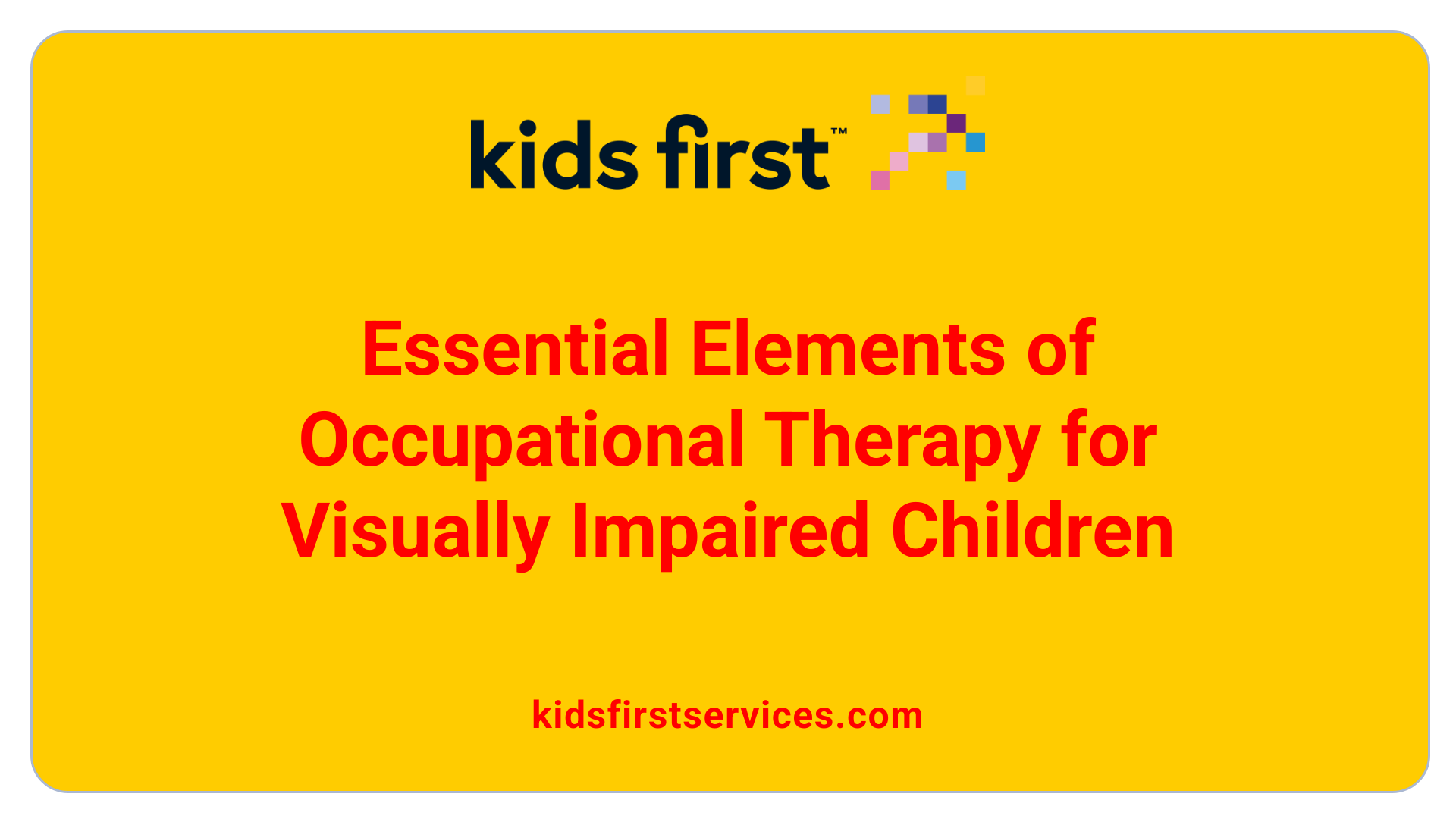
What is the role of occupational therapy in children with visual impairments?
Occupational therapy plays a vital role in supporting children with visual impairments by enhancing their ability to engage in daily activities and facilitating their overall development. Therapists conduct thorough assessments to understand how visual impairments affect the child’s functioning, focusing on their motor skills, sensory processing, and social interactions.
Roles and responsibilities of occupational therapists
Customized interventions are designed based on the child’s individual needs and family goals. These may include:
- Teaching daily living skills
- Sensory integration techniques
- Mobility training
By adapting environments with assistive technologies, occupational therapists increase safety and participation in various activities, ensuring the child's comfort and engagement.
Interventions tailored for visually impaired children
The use of sensory-rich activities is crucial, as these children often rely on their other senses to explore and understand their environment. Activities might include:
- Tactile play with differing textures
- Auditory discrimination exercises
- Exploring cause-and-effect toys
Through these tailored strategies, children can develop compensatory skills and boost their confidence.
Impact on children's daily functioning
By creating supportive and engaging learning experiences, occupational therapists help children with visual impairments to build confidence and independence in their daily lives. This holistic approach not only addresses visual deficits but also nurtures skills in areas like fine motor abilities, sensory integration, and movement coordination, ultimately leading to enhanced overall functioning.
Therapeutic Strategies for Children with Visual Impairments
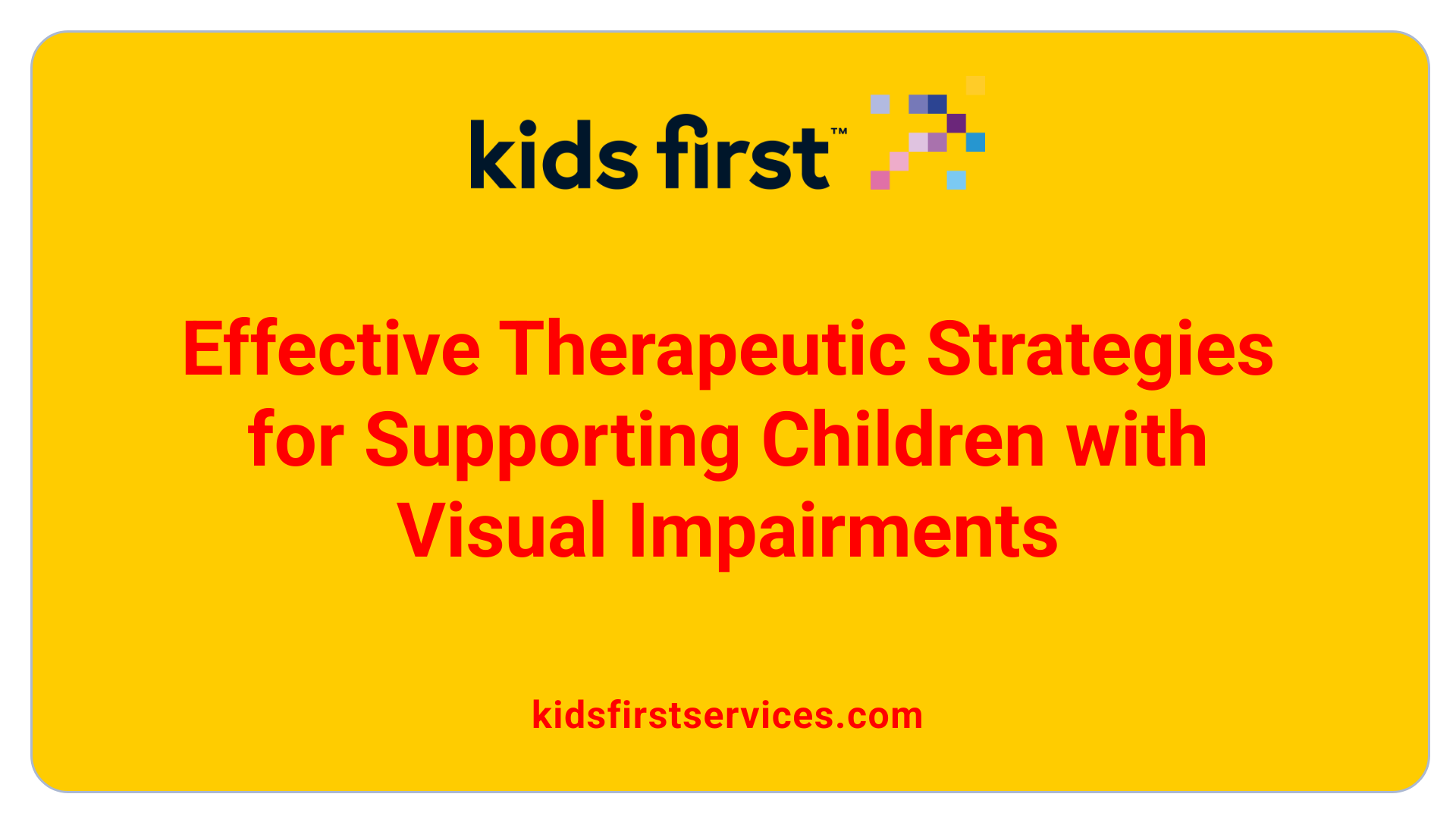
What strategies can occupational therapists use to support children with visual impairments?
Occupational therapists utilize a range of strategies tailored to each child’s individual needs. One effective approach is creating a literacy-rich environment, ensuring materials are accessible in print, braille, and audio formats. This supports reading and comprehension skills vital for educational success.
Therapists also promote cognitive development through hands-on exploration of various sensory materials. Activities that stimulate both gross and fine motor skills are incorporated, fostering overall development. Engaging in discussions before, during, and after activities enhances language skills and comprehension levels.
Adaptive technologies and supportive environments
The integration of adaptive technologies is critical. Therapists utilize tools that aid in learning and navigation, conducting Learning Media Assessments to find the best fit for each child's learning style.
Creating supportive environments is equally important. Organizing spaces to be clutter-free and well-oriented enhances children’s ability to navigate easily and engage socially with peers. Clear verbal communication about surroundings and activities helps build confidence in children as they learn to explore their environment safely.
The Crucial Interplay of Sensory Integration
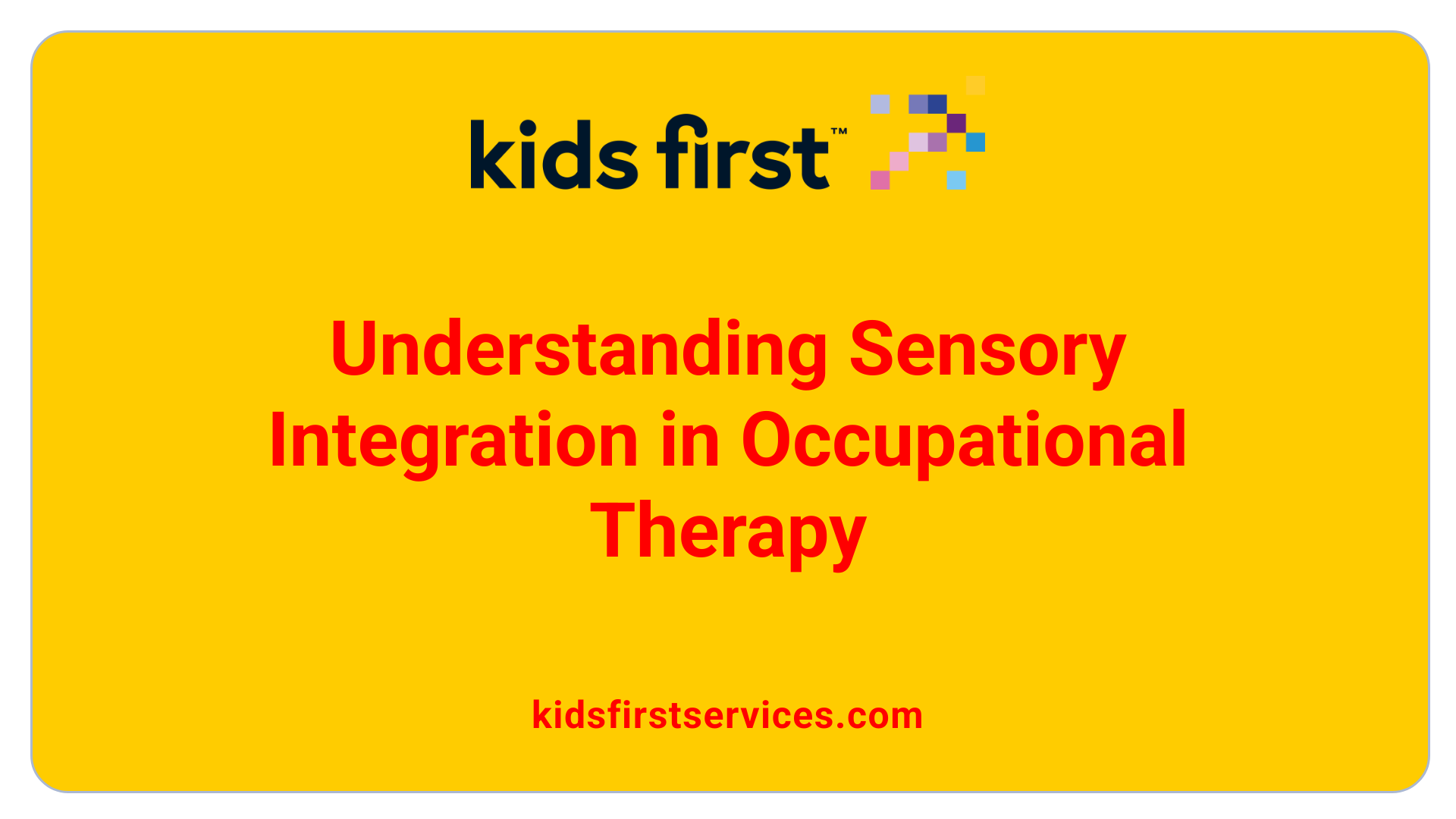
What is the relationship between sensory integration and occupational therapy for visually impaired children?
The relationship between sensory integration and occupational therapy for visually impaired children is crucial for their overall development and well-being. Sensory integration therapy helps these children process and organize sensory inputs from their environment, which is particularly challenging due to their visual impairments.
Occupational therapists assess sensory processing difficulties and create tailored intervention strategies, including sensory diets that incorporate tactile and auditory stimuli to enhance engagement and skill development.
Children with visual impairments often face additional sensory processing challenges, which can lead to developmental delays in motor, cognitive, and social-emotional skills. Common challenges include:
- Negative reactions to touch
- Clumsiness and difficulty with motor skills
- Atypical responses to sensory stimuli
By integrating sensory integration techniques within occupational therapy, therapists can help visually impaired children improve their navigation skills and daily interactions, ultimately promoting their emotional adjustment and independence.
Importance of non-visual sensory inputs
Given their visual limitations, children with visual impairments rely heavily on non-visual sensory inputs—such as touch and sound—to explore and understand their surroundings. Occupational therapy focuses on enhancing these inputs through targeted activities, allowing children to develop compensatory strategies for learning and everyday interactions.
Developmental Implications of Visual Impairments
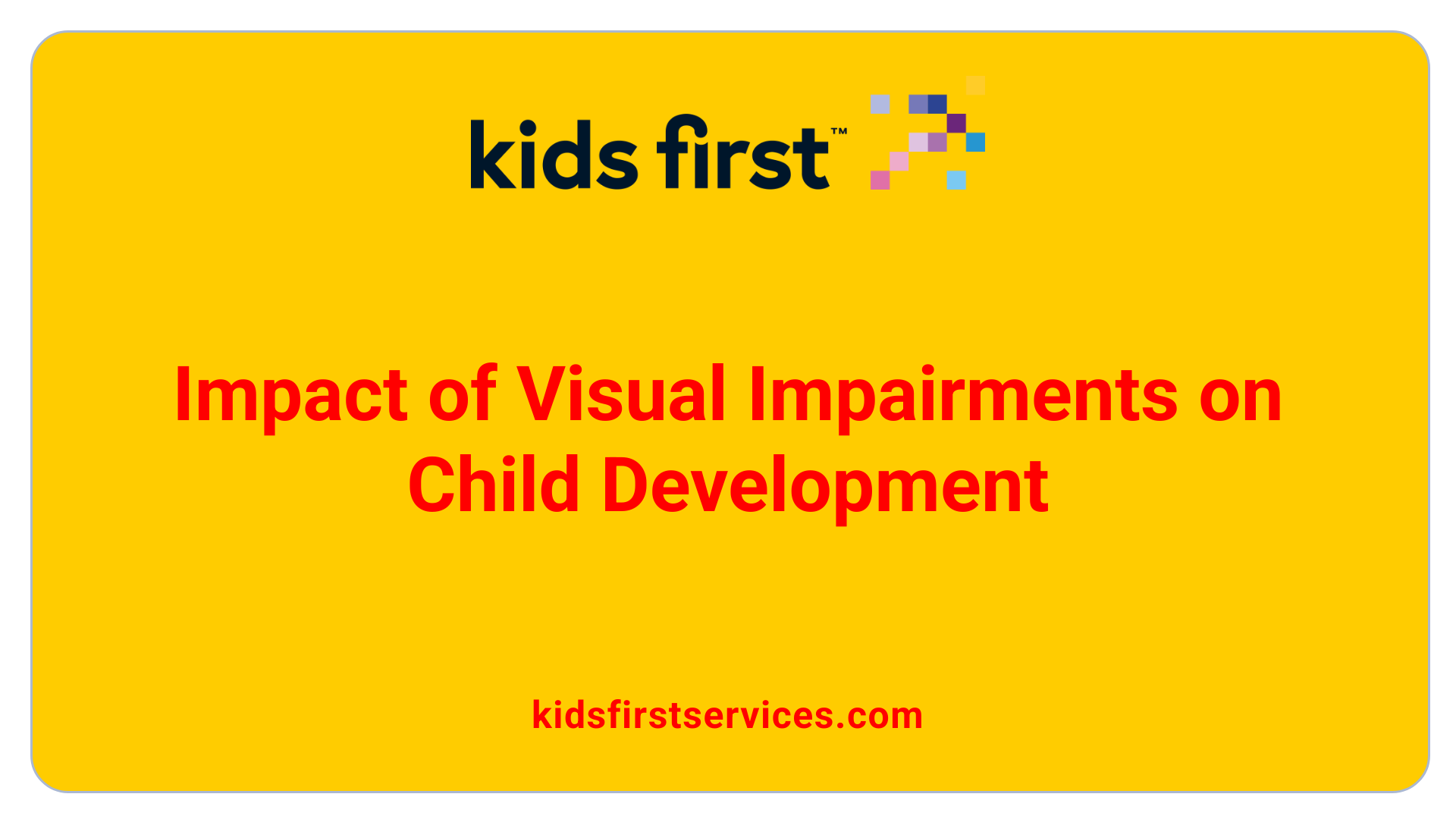
How do visual impairments impact a child's development and daily functioning?
Visual impairments can significantly hinder a child's development and daily functioning across multiple domains, including motor, cognitive, language, and social skills. Blind infants often experience delays in motor development and self-initiated mobility, impacting their ability to explore their surroundings and practice coordinated movements.
Cognitive development is also affected, as visual impairments can slow the understanding of concepts like object permanence and causal relationships. This leads to challenges in language acquisition and communication, making it harder for these children to express their needs and interact verbally with their peers.
Social interactions can suffer due to a lack of visual cues, which in turn may result in increased withdrawal and isolation. The absence of visual feedback complicates the development of a self-concept and social skills, often leading to difficulties in forming relationships and participating in group activities.
Furthermore, the long-term repercussions can extend into educational achievements and future socioeconomic status. Children with visual impairments may struggle academically, which stresses the importance of early intervention and tailored support strategies that foster development across all areas of life.
Legal Frameworks Guiding Occupational Therapy
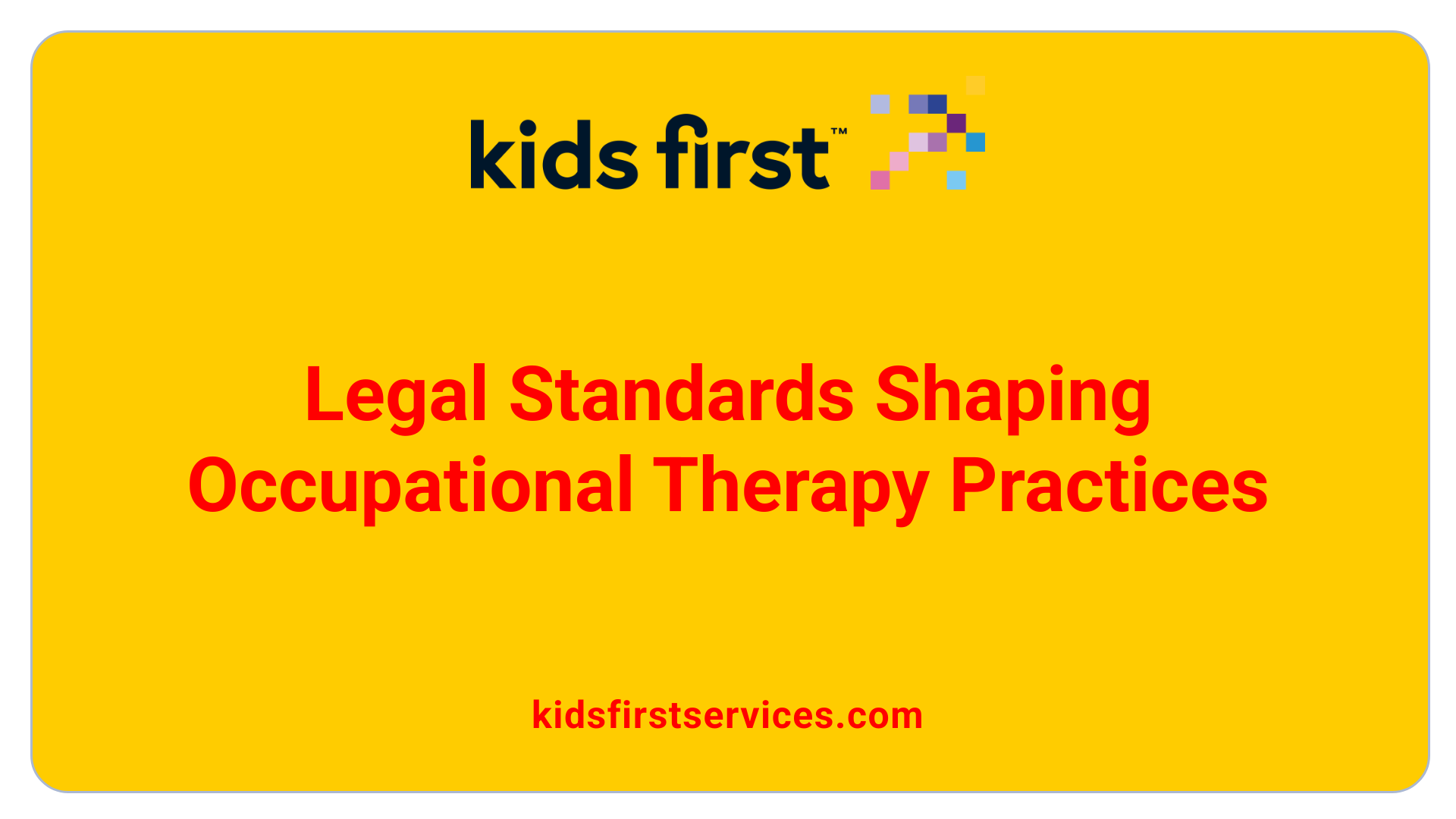
What are the legal mandates impacting occupational therapy for visually impaired children?
Legal mandates significantly influence the practice of occupational therapy for children with visual impairments. The Individuals with Disabilities Education Act (IDEA) plays a central role by ensuring that eligible children receive necessary educational services, including occupational therapy, as part of their Individualized Education Plans (IEPs). This law defines visual impairment comprehensively, addressing any condition that adversely affects a child's educational performance, thus establishing their eligibility for therapy services.
Additionally, Section 504 of the Rehabilitation Act ensures equal opportunities and accommodations for students with visual impairments, further reinforcing their rights to receive the support they need in educational settings. The Every Student Succeeds Act complements these frameworks by highlighting the integral role of occupational therapy practitioners within the educational system, particularly in developing state accountability plans responsive to the needs of students with disabilities.
Together, these legal frameworks not only mandate the provision of occupational therapy interventions but also guide practitioners in tailoring support to help children with visual impairments achieve essential academic and social skills, promoting their overall success in school and daily life.
The Future of Occupational Therapy in Education
Occupational therapy in school settings
Occupational therapy (OT) plays an increasingly vital role in educational environments, particularly for children with visual impairments. Through individualized intervention plans, occupational therapists assist students in enhancing their functional vision and sensory integration skills, ensuring they can engage effectively in various activities, including reading, writing, and participating in sports. These interventions are essential as they address not only the academic aspects but also the socialization and emotional well-being of the child.
Collaborative practices
Collaboration among families, educators, and occupational therapists is crucial in creating an inclusive school environment. By developing individualized education plans (IEPs), therapists can ensure that the specific needs of children with visual impairments are met. This multidisciplinary approach fosters a supportive atmosphere that enables children to thrive. Details such as reducing visual clutter in classrooms, using high-contrast materials, and implementing assistive technologies can significantly enhance learning experiences.
Involving occupational therapists in training staff and parents further amplifies the effectiveness of strategies employed, creating a comprehensive support system that empowers children with visual impairments to navigate their educational journeys successfully.
Conclusion: A Path to Independence and Growth
Occupational therapy serves as a cornerstone in the lives of children with visual impairments, providing critical support that bridges the gap between their potential and daily challenges. By meticulously crafting individualized intervention plans, employing sensory integration techniques, and adhering to vital legal guidelines, occupational therapists empower children to achieve greater independence and participation in their lives. As our understanding of the diverse needs of these children continues to evolve, so too will the strategies and collaborations aimed at unlocking their full potential in both educational settings and beyond. Together, with innovation and dedication, we can help visually impaired children to not only adapt but thrive within their environments.
References
- The role of OT in supporting children with visual impairments
- [PDF] Occupational Therapy For Young Children With Visual Impairments ...
- Occupational Therapy and Sensory Integration for Children with ...
- Occupational Therapists Are a Key to Addressing the Impact of ...
- Occupational Therapy and Sensory Integration for Visual Impairment
- [PDF] Occupational Therapy: Cortical Visual Impairment
- Pediatric Vision Impairment - Occupational Therapy Services
- How You Can Support a Child with a Visual Impairment
- Supporting Students With Visual Impairment - AOTA
- Vision-related tasks in children with visual impairment: a multi ...



